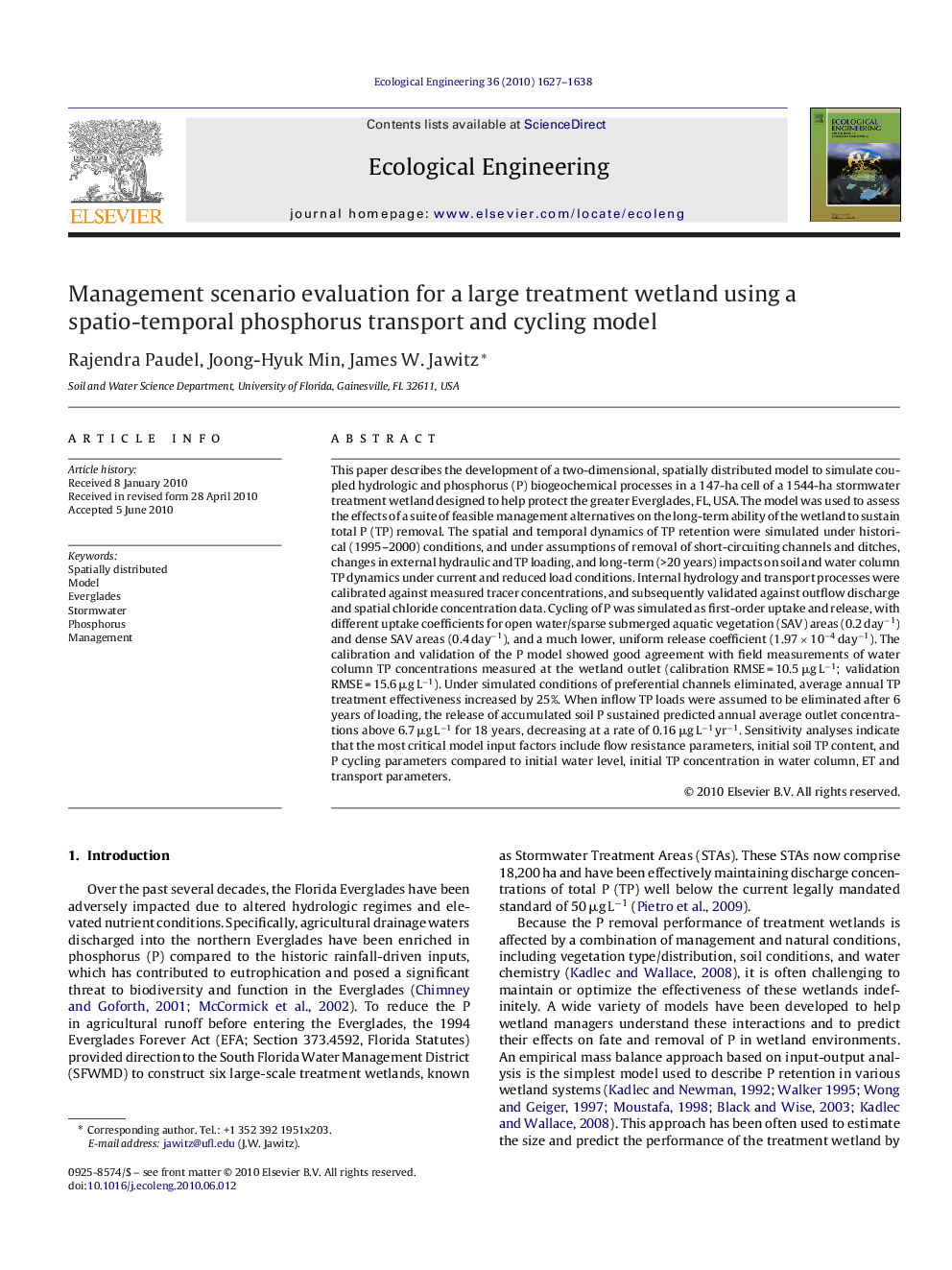| Article ID | Journal | Published Year | Pages | File Type |
|---|---|---|---|---|
| 4390473 | Ecological Engineering | 2010 | 12 Pages |
This paper describes the development of a two-dimensional, spatially distributed model to simulate coupled hydrologic and phosphorus (P) biogeochemical processes in a 147-ha cell of a 1544-ha stormwater treatment wetland designed to help protect the greater Everglades, FL, USA. The model was used to assess the effects of a suite of feasible management alternatives on the long-term ability of the wetland to sustain total P (TP) removal. The spatial and temporal dynamics of TP retention were simulated under historical (1995–2000) conditions, and under assumptions of removal of short-circuiting channels and ditches, changes in external hydraulic and TP loading, and long-term (>20 years) impacts on soil and water column TP dynamics under current and reduced load conditions. Internal hydrology and transport processes were calibrated against measured tracer concentrations, and subsequently validated against outflow discharge and spatial chloride concentration data. Cycling of P was simulated as first-order uptake and release, with different uptake coefficients for open water/sparse submerged aquatic vegetation (SAV) areas (0.2 day−1) and dense SAV areas (0.4 day−1), and a much lower, uniform release coefficient (1.97 × 10−4 day−1). The calibration and validation of the P model showed good agreement with field measurements of water column TP concentrations measured at the wetland outlet (calibration RMSE = 10.5 μg L−1; validation RMSE = 15.6 μg L−1). Under simulated conditions of preferential channels eliminated, average annual TP treatment effectiveness increased by 25%. When inflow TP loads were assumed to be eliminated after 6 years of loading, the release of accumulated soil P sustained predicted annual average outlet concentrations above 6.7 μg L−1 for 18 years, decreasing at a rate of 0.16 μg L−1 yr−1. Sensitivity analyses indicate that the most critical model input factors include flow resistance parameters, initial soil TP content, and P cycling parameters compared to initial water level, initial TP concentration in water column, ET and transport parameters.
